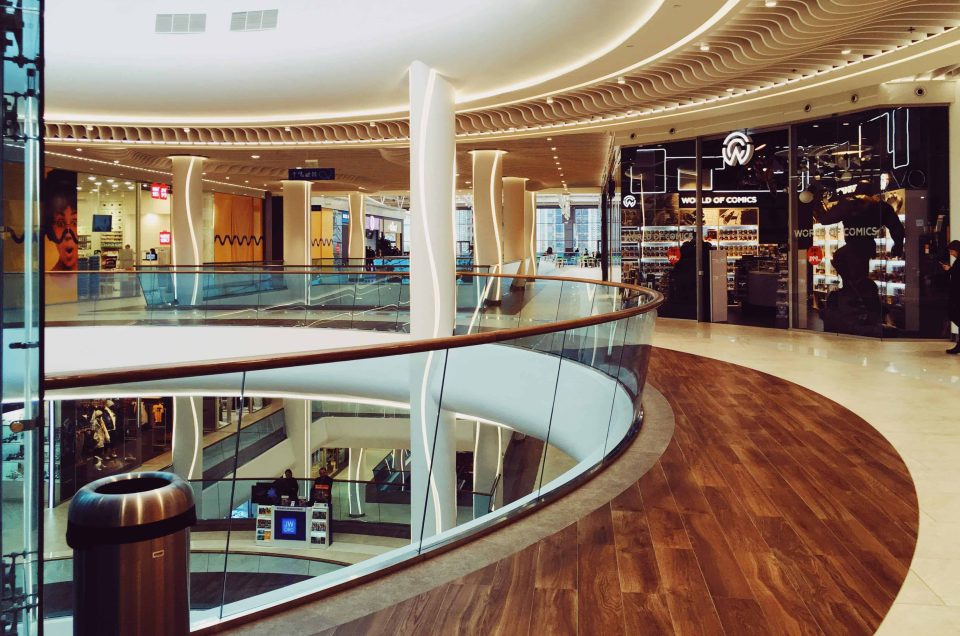The Impact Of Coronavirus: What To Expect In Retail

By now, it is very clear that the outbreak of COVID-19 has disrupted more than our daily routine and work life. It has had an extensive impact on the global economy as well, to what extent is yet to be determined.
Meanwhile, there are several key observations that are worth taking into account. Colliers International have compiled an extensive amount of data, insights and recommendations for each sector of Real Estate in EMEA.
KEY OBSERVATIONS
It is clearly very difficult to provide an outlook for such a fast-moving predicament that is impossible to measure accurately.
Any retail space supported by needs based (grocery) spending has already benefited from a short-term cashflow boost, as will pharmacy outlets.
Sales of large-screen TVs, WIFI routers and ‘home office kit’ supplies are also spiking, which points to the grocery-led space and retail parks providing a defensive position against the ongoing crisis.
The flipside for grocery and pharmacy products specifically is that a prolonged period of containment leads to reduced levels of supplies, and thus goods available for sale, diminishing turnover mid-term.
“Those with an omni-channel operation will probably be doing very well – this applies to both e-goods and e-services, with demand for virtual box sets and on-line gaming likely to complement the rise in on-line grocery, goods and catering.”
High street locations, particularly those dependent on tourism, and major enclosed shopping centres buoyed by F&B, leisure (cinemas, bowling alleys) and events space are most at risk of a drop in cashflow – for many centres, the leisure and F&B component comprises 50% of space and revenue.
“The curtailing of major social and business events means that locations where the broader retail economy is reliant on hosting major/regular sporting, musical or cultural events are going to feel the pinch.”
For many, this will only serve to compound existing operational issues which could enforce another retailer cull and drive an ever-higher level of CVAs (company voluntary arrangements).
We are already hearing of retailers in some markets adopting a ‘force majeure’ response given the severity of the situation. There are already signs that this is having an impact on some major shopping centre owners.
The move by many central banks to ease borrowing costs should provide households with capacity to continue with some discretionary retail spending. Some of this may be redistributed towards needs/health-based spending, some may go on ‘occupancy spending’ e.g. refurbishment projects at home, putting in those big screens or solar roof panels.
Given that discretionary spending accounts for at least 36% of household income, the short-term impact for many households should be manageable.
Retail spending is seasonal of course, so the timing with which Europe recovers from containment should manage the downside risks to many retailers. Retail spending is also heavily weighted to the second half of the year, particularly Q4.
“A worst-case scenario is that 25% of discretionary spending is cut from the economy during the middle of 2020.”
For shopping centre and retail park owners, preparations to handle this situation – and the increased threat implied by fake news/social media – requires a considered crisis communication plan and preparation.
Reviewing tenant routines and the operation of increased-risk areas (e.g. soft play, food courts, cinemas) will be critical in ensuring your retail centre remains functional.
MARKET CONTEXT
Retail spending on goods accounts for around one third of household disposable income, with a further third spent on more discretionary services and experiences.
The remaining third goes towards housing /occupancy costs and savings. This should allow some ‘belt-tightening’, and maintain at least needs-based retailing.
Source: Colliers International
Retail spending ‘seasonality’ illustrates that the period the most likely to be impacted by quarantine measures will be Q2.
Fortunately for retailers, this is not a peak season, which typically follows in H2, and especially Q4.
“Provided that COVID-19 and the economic/market impact can be contained, spending could recover strongly at the end of 2020.”
Source: Colliers International
OMNI-CHANNEL CAPACITY
The ability of markets to support spending and retailers providing omni-channel goods, and e-services is going to be an important factor in supporting economies, not just retailers.
As the chart below highlights, there are stark differences in the current levels of omni-channel adoption and supporting infrastructure. Markets in the upper right quadrant are those best positioned to cope, compared to those in the bottom left quadrant which are more dependent on physical retailing and eating out.
Source: Colliers International
RETAIL MARKET IMPACT
“High-street and enclosed shopping centres are the most exposed to a downturn in discretionary consumer spending.”
Retail, as we all know, has been suffering structurally with an over-supply of high street space in particular. Government measures in some markets to alleviate the payment of business rates will support some businesses short-term.
Enclosed shopping centres, that have shifted their model towards experience retailing and food and beverage will also feel the negative impact of government social distancing policies.
“Shopping centres that have a grocery anchor and community facility anchor should prove to be more resilient.”
Grocery stores and the more convenient, cost-conscious car-based retail park model should also prove to be more defensive, particularly those offering click and collect services.
Longer-term on-line retailing to increase as more traditional retailing countries/markets recognise the need to adopt cultural behavioural norms.
Source: Colliers International
RENTAL OUTLOOK
The retail rental outlook for many European cities at the start of 2020 was already looking weak, although the bulk of markets were expecting stable rental conditions.
“The severe shock to the market brought about by Covid-19 will see rents come under downward pressure across the board in 2020.”
That includes even those locations that were factoring in rental growth across retail asset types at the beginning of the year.
Tourism focused high-street markets that are already under oversupply/structural weaknesses are likely to witness the biggest negative movement in rental rates.
In some locations, such as Italy, contractual agreements may be undermined by ‘force majeure’ defaults and whether tenants can/will attempt to claim this.
Retail tenants are already starting to postpone rental payments across numerous countries.
“With government enforced shut downs, the question will be whether the government will be able to compensate tenants/landlords beyond some business rate cuts.”
Source: Colliers International
The analysis has been prepared by Colliers International.
Last updated: 17 March 2020.
BREL FORUM
Coping with the new business and market reality will take a new level of the latest trends in digitalisation and investment, business flexibility and strategy.
For nearly a decade, the Baltic Real Estate Leaders (BREL) Forum has brought together leaders in real estate, investors and specialists from the Baltic states and accomplished industry leaders, experts and CEOs from around the world.
Cooperation and knowledge exchange in these new market conditions is more important than ever.
“In 2020, the BREL Forum will focus on crisis management in three success factors in the real estate industry: digitalization, investment and urban planning.”
These and other market trends will be reviewed at the Baltic Real Estate Leaders (BREL) Forum 2020 which takes place in Riga on November 6.
Book your seat to the forum right here.
Disclaimer: The analysis and findings reported in this article is based primarily on Colliers International data, which may be helpful in anticipating trends in the property sector. However, no warranty is given as to the accuracy of, and no liability for negligence is accepted in relation to, the forecasts, figures or conclusions contained in this report and they must not be relied on for investment or any other purposes. The outbreak of the Novel Coronavirus (COVID-19), declared by the World Health Organisation as a “Global Pandemic” on the 11th March 2020, has impacted market activity in many sectors, creating an unprecedented set of circumstances on which to base a judgement. This report does not constitute and must not be treated as investment or valuation advice or an offer to buy or sell property. Given the unknown future impact that COVID-19 might have on real estate market supply, demand and pricing variables, it is recommended that you recognise that the research and analysis above is far more prone to market uncertainty, despite our endeavours to maintain our robust and objective reporting.





